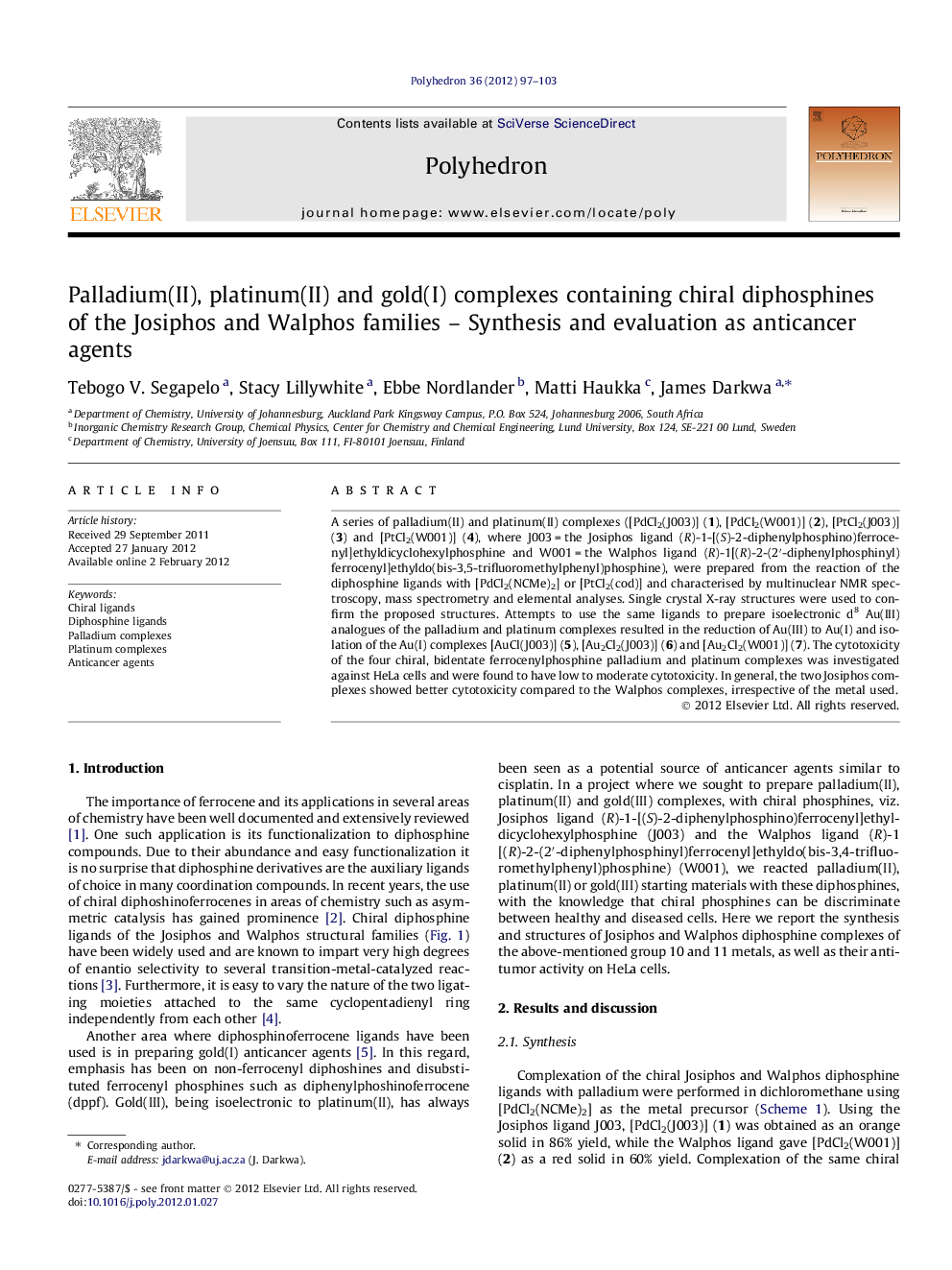| Article ID | Journal | Published Year | Pages | File Type |
|---|---|---|---|---|
| 1337607 | Polyhedron | 2012 | 7 Pages |
A series of palladium(II) and platinum(II) complexes ([PdCl2(J003)] (1), [PdCl2(W001)] (2), [PtCl2(J003)] (3) and [PtCl2(W001)] (4), where J003 = the Josiphos ligand (R)-1-[(S)-2-diphenylphosphino)ferrocenyl]ethyldicyclohexylphosphine and W001 = the Walphos ligand (R)-1[(R)-2-(2′-diphenylphosphinyl)ferrocenyl]ethyldo(bis-3,5-trifluoromethylphenyl)phosphine), were prepared from the reaction of the diphosphine ligands with [PdCl2(NCMe)2] or [PtCl2(cod)] and characterised by multinuclear NMR spectroscopy, mass spectrometry and elemental analyses. Single crystal X-ray structures were used to confirm the proposed structures. Attempts to use the same ligands to prepare isoelectronic d8 Au(III) analogues of the palladium and platinum complexes resulted in the reduction of Au(III) to Au(I) and isolation of the Au(I) complexes [AuCl(J003)] (5), [Au2Cl2(J003)] (6) and [Au2Cl2(W001)] (7). The cytotoxicity of the four chiral, bidentate ferrocenylphosphine palladium and platinum complexes was investigated against HeLa cells and were found to have low to moderate cytotoxicity. In general, the two Josiphos complexes showed better cytotoxicity compared to the Walphos complexes, irrespective of the metal used.
Graphical abstractTwo chiral phosphines (Josiphos and Walphos) palladium, platinum and gold anticancer cancer complexes were prepared. One of the gold complex with Josiphos showed a rare bidentate binding of a diphos to gold(I). All the complexes were active against HeLa cells, but the Josiphos analogues had better activity.Figure optionsDownload full-size imageDownload as PowerPoint slideHighlights► Chiral phosphines palladium, platinum and gold anticancer complexes. ► Rare bidentate (diphos)gold(I) binding. ► Palladium, platinum and gold anticancer agents.
